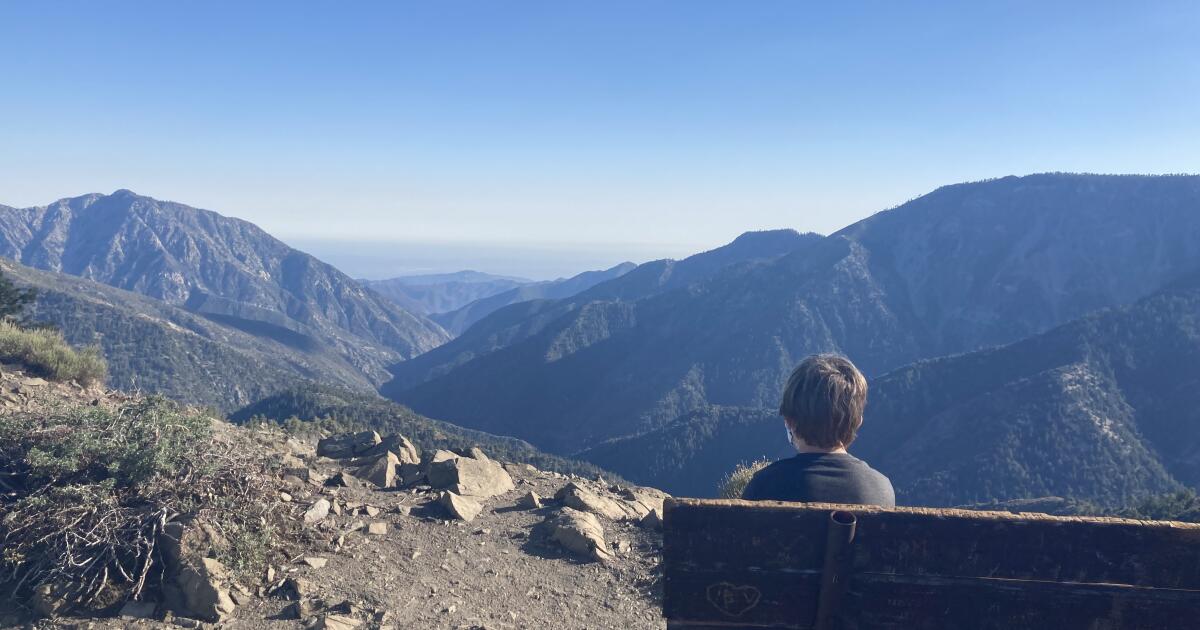Every hiker in Los Angeles knows that sinking feeling.
You stare at the mountains (because that’s what we do when we have a moment) and see a dark column of smoke. Almost instantly you have a good idea of which trails might be burning and, depending on if it’s hot, dry and the right time of year, whether the fire will eventually reach your spot.
In 2020, the Bobcat fire blowtorched a few of my family’s beloved spots in the Angeles National Forest. Now, four years later, the 55,000-acre Bridge fire is taking out a few of our remaining L.A.-adjacent mountain retreats, upending lives in forest communities such as Wrightwood and imperiling mountain lions, bears, bighorn sheep, frogs and other wildlife.
To call this heartbreaking grossly understates the loss. Imagine if an earthquake wiped out Disneyland or Dodger Stadium — devastating, yes, and thankfully rebuildable. But when a mountain forest burns in the kind of extreme fires of late, nature probably won’t rebuild it in my lifetime. That most of these disasters have preventable human causes makes the loss obscene.
Human causes? Though climate change gets the attention, simple human recklessness or malice often lights the first spark, then drought and extreme heat take over.
Investigators haven’t determined what started the Bridge fire. But, police arrested an arson suspect in connection with the Line fire in the San Bernardino Mountains (39,000 acres), and the Airport fire in Orange County (24,000 acres) was sparked by a public works crew moving boulders with heavy machinery.
Other major fires have had more innocuous origins. In 2018, the Carr fire near Redding burned more than 1,000 structures and an area of forest roughly the size of the city of San Diego, killing eight people. That fire started on National Park Service land after a driver’s trailer had a flat tire, causing a rim to scrape the road and shoot sparks into tinder-dry brush.
There’s no argument: Humans present the clearest and most present fire danger to wildlands. And in the L.A. area, roughly 18 million of us live near more than 2 million acres of government-managed forests.
So here’s what the U.S. Forest Service, the National Park Service and California State Parks ought to do when conditions are predictably ripe for cataclysmic fire: Close their forests.
When a major heat wave bears down on us — as one did before all the fires burning around us now, and before the Bobcat fire in 2020, and before the Carr fire in 2018 — tell drivers, hikers, hunters and everyone else looking to the mountains for relief: Don’t come here, because it’s too dangerous, and we don’t want you starting another fire.
This wouldn’t be without precedent. Just before Labor Day weekend in 2021, the Forest Service temporarily closed nearly all of its land in California. Though the mountains around Los Angeles were quiet at the time, the rest of the state was experiencing its second-worst fire season on record — second only to 2020, when more than 4% of California’s total land area burned. At a time of extreme danger, the Forest Service wanted to ensure resources could be used fighting fires rather than evacuating visitors.
For Southern California and other places spared another year of catastrophe, the closure was preventive. The Forest Service said as much when it announced its order: “The closure order will also decrease the potential for new fire starts at a time of extremely limited firefighting resources.”
I don’t recommend such preemption lightly. Access to public lands is soul food for outdoor-minded city dwellers like me, not to mention the right of every American. That we in Los Angeles have so much accessible wilderness in our backyard is an immense privilege.
Nor do I believe this would prevent every fire, or even most fires. The Line fire in San Bernardino County has burned mostly Forest Service land, but investigators believe an arsonist started it in an adjacent suburb. Power lines and lightning strikes have also wreaked havoc on our forests.
But managing access to forests needs to reflect the reality of climate change. That includes telling people to stay out for a week or two when the foliage is bone-dry and another hellish heat wave appears in the weather forecast. We’ve long had the tools to predict the conditions for extreme fire dangers; it’s a shame not to use those tools to better protect our struggling forests from us, and our way of life, from going up in smoke.

